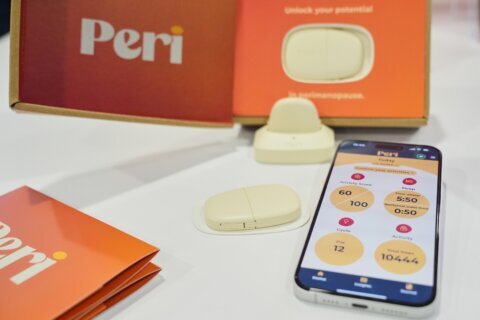This video is no longer available.
Long before the popularity of car racing video games, the slot car craze in the 1960s and ’70s had young people and their parents obsessed with racing scale models. Now, a new generation of slot cars is zooming around the track.
“A slot car is an electrically powered miniature vehicle, running on a track which has a slot — the car has a little pin underneath, so the slot guides the car around the track,” said Frank Tiessen, president and CEO of Carrera Revell of Americas. “Besides the pin there were some metal strips which basically take the power out of the track, then into the motor in the vehicle.”
“The 1960s was the heyday of slot car racing,” said Tiessen, whose company merged two of the big names in slot cars and true-to-the-original plastic scale models that have been popular with hobbyists since the 1930s.
In the 1960s, home versions of slot car racing tracks were available, but that wasn’t the only place to race.
“You could find places all over the U.S. where you could go race your car, if you didn’t have a complete track setup at home,” said Tiessen. “In the 60s there were up to 2,700 places like that — that’s how popular it was.”
Large slot car tracks, built to accommodate many racers at a time, were located in hobby shops, and places that billed themselves as raceways.
“You had to pay to go in there. There was an hourly fee. If you didn’t have a slot car, you could also rent a slot car,” said Tiessen. “It was basically like a bowling alley.”
How do you drive a slot car?
Since slot cars were ‘steered’ by the pin under the car, acceleration was the key to how quickly a driver could circumnavigate the track.
“There was a pistol grip controller, where you manually determine the speed with your index finger,” said Tiessen. “Or, like we have at Carrera, you have a push-button controller, where you do it with your thumb.”
While the physical activity required to drive a slot car was limited, racing scale models that went from zero to speeds over 100 miles per hour in a split second required skill.
“It was like in real racing — go as fast as you possibly can, full speed down the straight, then slow down in the turn so you can make the turn,” said Tiessen. “And kids would see how fast you can get through the turn — can you get that drift, without flying out.”
The slot car craze was immersed in popular culture in the 1960s. “In 1963, the U.S. championship slot car racing was live on ‘The Tonight Show with Johnny Carson’ — that’s how popular it was.”
In 1967, the Batman TV show featured a scene in which Bruce Wayne and Dick Grayson raced their cars around a huge track that Aunt Harriet and Albert had built in stately Wayne Mayor.
However, the popularity of slot car racing deaccelerated quickly
“It really slowed down in the 70s, with the advent of all our electronic toys,” said Tiessen. “When personal computers and video games came in, you could really see it slowed down.”
For the past several decades, slot cars have remained popular among far fewer enthusiasts. However, the pandemic sparked a resurgence, he said.
“Parents thought back to what did they do when they stayed home, back when they were young, and so introduced a lot of kids to slot car racing,” said Tiessen.
The physical experience of racing a slot car is different than racing in a video game, he said. “And it’s a communal experience. Rather than sitting in front of a screen, playing alone, this is having a group of friends over, playing and racing with the family.”
The new generation of Carrera tracks and cars include up-to-date car scale models for racing enthusiasts, as well as smaller at-home kits, tailored for today’s younger people, with marketing tie-ins to Disney and Pixar’s Cars and Mario Kart.








